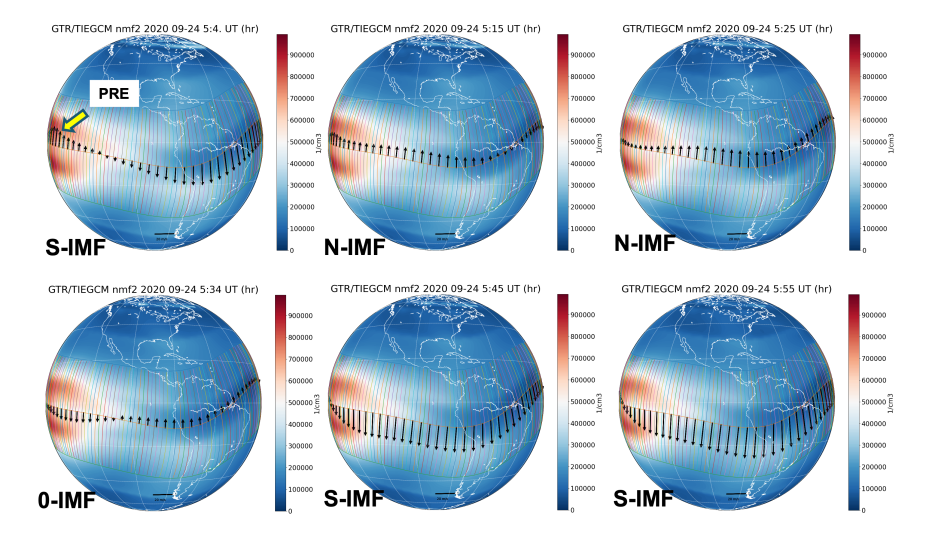JGR Space Physics: Qian Wu, Wenbin Wang, Dong Lin, Chaosong Huang, and Yongliang Zhang use the newly developed, Multiscale Atmosphere-Geospace Environment (MAGE) model to simulate the penetrating electric field in the equatorial region under different interplanetary magnetic field (IMF) BZ conditions during September 2020. Two intervals were selected for detailed analysis and the latter one was compared with the vertical ion drift data from the NASA Ionospheric Connection Explorer (ICON) satellite. The MAGE simulations show that in southward IMF (S-IMF) cases, the dawn-dusk electric potential drop at the equator is about 12% of the cross polar cap potential difference. Based on the MAGE simulation, the dawn-dusk potential drop at the equator varies nearly instantaneously on the order of a few minutes with the changes in the IMF BZ or interplanetary electric field, which in turn alters the vertical ion drift. The daytime changes of the equatorial vertical ion drift in response to the penetrating electric field related to the IMF BZ are only half of that during the nighttime. ICON data, though not inconsistent with the simulation, were not able to verify the occurrence of penetrating electric field because of its unfavorable location at the time. The MAGE simulation shows a pre-reversal enhancement (PRE) during southward IMF cases, but the PRE was absent in the ICON IVM observations. Further observations and modeling are needed to resolve this discrepancy.

Nightside vertical ion drift at the magnetic equator (black arrows downward drift shown as pointing southward in the figure) of September 24, 05-06 UT (A). Background is the nmf2 from the MAGE. Dusk is on the left. EIAs are clearly seen on the duskside. PRE is present in the first case. The vertical ion drift varies with IMF Bz component and equatorial electric field. During S-IMF cases, the vertical ion drifts are mostly downward. The scale vector is for 20 m/s.